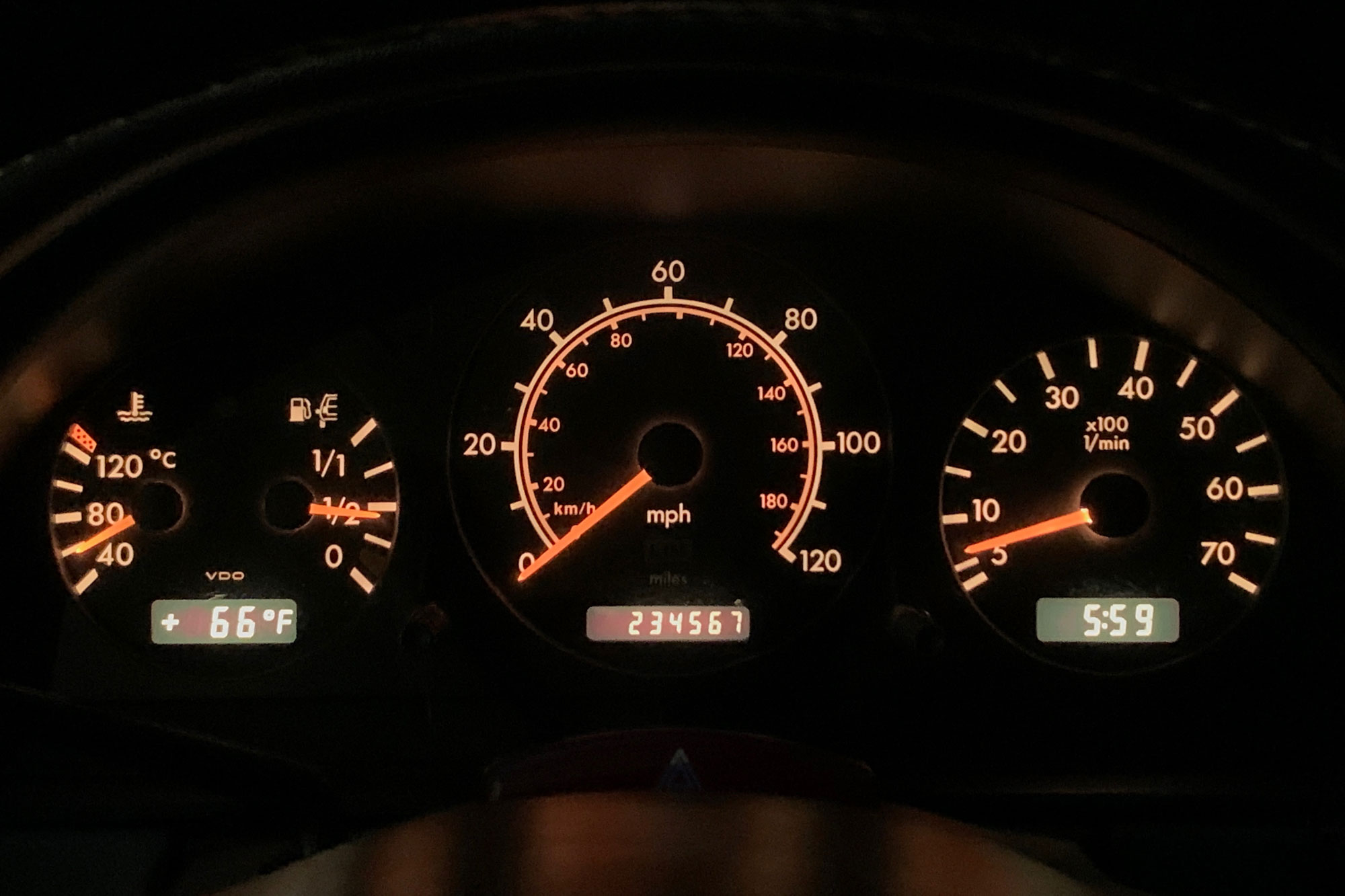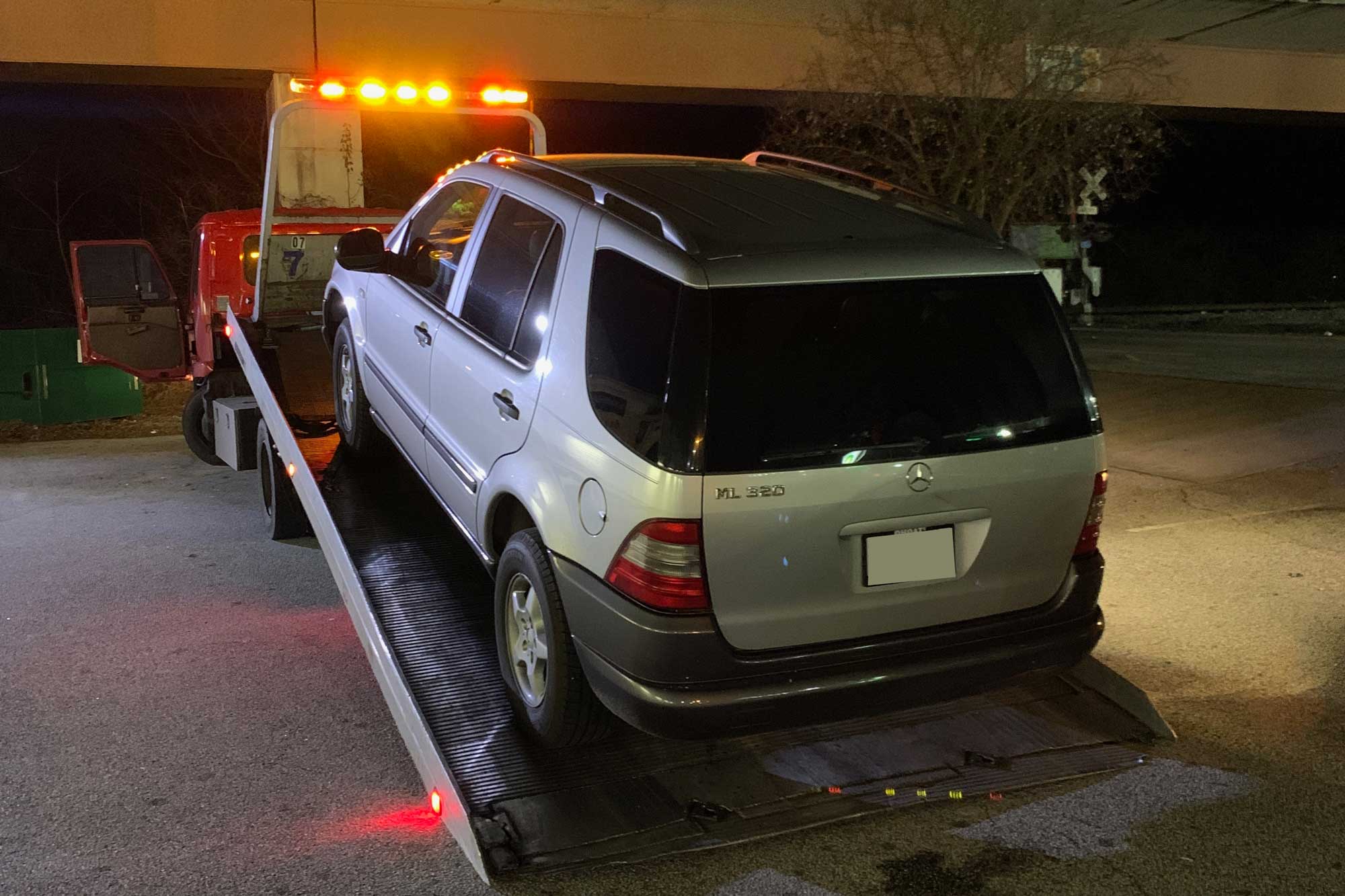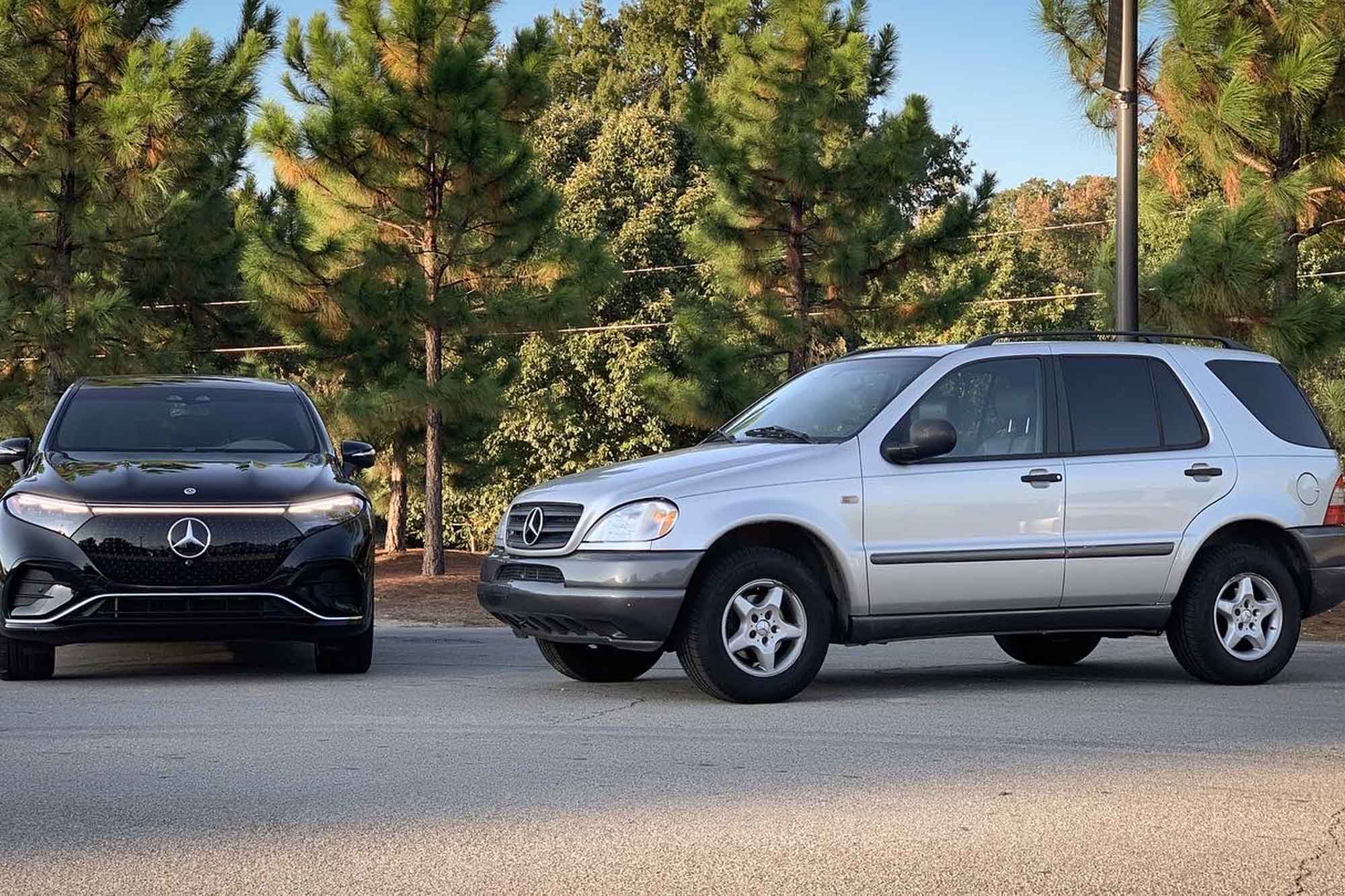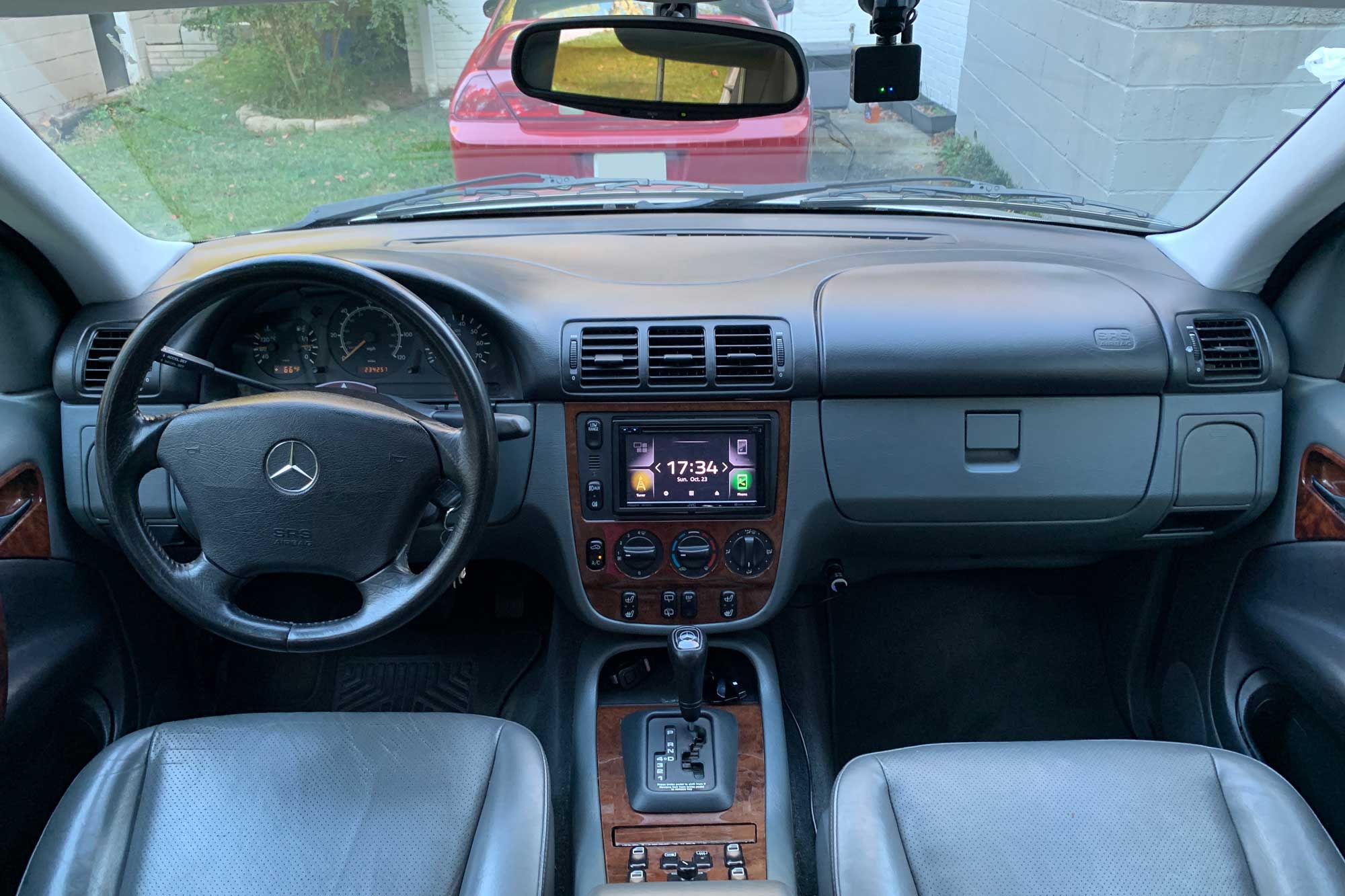Normcore Car Collectibles: When People Come to Care About Unexceptional Cars
Nostalgia is a powerful factor in the used-car market.
Chris Landry has slowly built a unique car collection. The Atlanta architectural designer started with a pair of Honda Accords: a 1990 sedan in the same color scheme as the one his parents had when he was growing up and then a 1999 two-door.
As affordable and reliable transportation, these vehicles were once commonplace in the United States, but given their former ubiquity, quotidian appearance, and limited performance, they don't exactly check any of the boxes that define a typical collectible. "I always joke that they're, like, worth $3," Landry said. "My cars are, like, $3 cars."
 Chris Landry
Chris Landry
Mercedes ML320: The Compassionate Clunker
When he decided he wanted a vintage SUV for off-roading, towing, and getting into the wilderness, he didn't look at the usual, desirable collector cars such as a vintage Jeep Wrangler or Toyota Land Cruiser. He chose one of the most unloved, non-luxurious, and least expensive vehicles ever to wear the three-pointed star: a 1999 Mercedes ML320.
This was the brand's first mass-market SUV, built during the era of the marque's merger with U.S. automaker Chrysler — the low point of Benz's prestige and vehicle quality.
"It was nicknamed the Alabama Trash Can," Landry said, explaining that the early M-Class was the first Mercedes to be built at the company's then-new U.S. factory, near Tuscaloosa, and was not comparable to its German-made counterpart. He described it as the kind of car driven in-period by "the stereotypical suburban mom with an 'I want to speak to the manager' haircut."
Landry said the most common comment he gets when people see him out in it — if they notice the car at all — is, "Oh my god, my aunt had one of those."
 Chris Landry
Chris Landry
Landry has had an abiding affection for these trucklets since first seeing one in the movie "American Beauty," and he specifically searched for a first-year model with the same interior and exterior color as the movie car.
He found a local candidate on Craigslist, and it was priced acceptably for a well-maintained, well-documented vehicle with more than 200,000 miles, at $2,700. However, after covering just 10,000 miles in Miss ML, as he called it, he had to replace the transmission, twice. (The first time was with a used transmission that also failed.)
 Chris Landry
Chris Landry
He's thus put more than $10,000 into a car that he purchased for less than $3,000. And while even hardcore brand aficionados — like attendees at local Mercedes car club events — look down at the car, Landry is not sorry he bought it.
"I could have spent the money that I've put into it on a much newer, nicer vehicle," he said, "but I wanted that car, and I wanted it to be fully functional. I think there's something novel about that. And it makes me feel nice to know that, even though it's not a super desirable car, it's now a very good example of one."
 Chris Landry
Chris Landry
Normcore Culture Grows and Diversifies
Landry is not alone in his affection for seemingly insipid vehicles. Worn down by the collectability of easily identifiable but unlovable cars from the nadir of the U.S. auto industry in the 1970s and '80s, the latest generation of collectors often seek out late-'90s or early-2000s vehicles that wouldn't stand out at a popular gathering, let alone in a store parking lot. Some call these cars normcore collectibles, and they're a fast-growing part of the hobby.
"The world of collector vehicles is broad, but there are commonalities we can find among them," said Jonathan Klinger, vice president of car culture at Hagerty, the Michigan-based collector-car insurance site. "Desirability — and in turn value — tends to begin rising 20 to 30 years after production, as individuals who grew up around those cars come into money and can finally afford to buy them. That could be a car they had on a poster on the wall or even a minivan they grew up in as passengers."
Klinger explained that, despite the different examples upon which vintage car buyers settle, the source of this affection remains consistent.
"Any vehicle that scratches that nostalgia itch," he said, "has the potential to become collectible."
 Chris Landry
Chris Landry
Classic-car auction sites such as
"I can't do a psychiatric analysis of all of these people, but it's something about nostalgia, combined with rarity, combined with ‘I want to be different,'" said Bring a Trailer co-founder Randy Nonnenberg. "Anyone out there can buy a new Porsche at the dealer, if they have the money and that's what they want to buy. But if you're driving around in Los Angeles or San Francisco, you may pull up to the same car stopped next to you. Whoever buys one of these, even if no one really notices it, they won't ever see another one pulling up next to them at a stoplight. Not ever."
 Chris Landry
Chris Landry
Nostalgia Is the Heartbeat of Normcore Collectibles
This thought process is definitely behind Landry's affection for his maligned ML. "I do kind of think it's interesting, "he said, "to have a car that not everybody else has or to keep one alive that people have a poor opinion of."
It feels unique to him. It also demonstrates the breadth of the hobby.
"I like it," he said. "You don't have to like it."
Hagerty's
"Remember," Klinger said, "it's often not how a car looks or performs that makes it valuable to the average buyer, it's the memories or emotions it evokes. Normcore cars likely evoke memories of simpler times. Given the past few years, it may just be that more people are chasing normal."
Written by humans.
Edited by humans.
 Brett Berk
Brett BerkBrett Berk is a New York City-based writer who covers the intersection of cars and culture: art, architecture, books, fashion, film, politics, television. His writing appears regularly in top-tier automotive and lifestyle publications.
Related articles
View more related articles